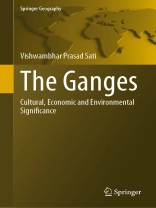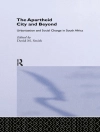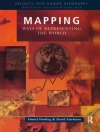‘The Ganges: Cultural, Economic, and Environmental Importance’ is a geographical, cultural, economic, and environmental interpretation of the Ganga River. The Ganga River originates from Gaumukh- situated in the high Himalaya, flows through the world’s biggest fertile alluvial plain, and inlets into the Bay of Bengal at Ganga Sagar. It makes a unique natural and cultural landscape and is believed to be the holiest river of India. The Hindus called it ‘Mother Ganga’ and worship it. The towns/cities, situated on its bank, are world-famous and are known as the highland and valley pilgrimages. The water of the Ganga is pious, and the Hindus use it on different occasions while performing the rituals and customs. This book is unique because no previous study which presents a complete and comprehensive geographical description of the Ganga has been composed. This book presents the historical and cultural significance of the Ganga and its tributaries. Empirical, archival, and observation methods were applied to conduct this study. There are a total of 10 chapters in this book such as ‘Introduction’, ‘the Ganga Basin’, ‘Geography of the Ganga Basin’, ‘the Ganges System: Ganga and its Tributaries’, ‘Ganga between Gaumukh and Uttarkashi’, ‘the Major Cultural Towns’, ‘Major Fairs and Festivals’, ‘Economic Significance of the Ganga’, ‘Environmental Issues’, and ‘Conclusions’. The contents of the book are enriched by 89 figures, 15 tables, and substantial citations and references.
表中的内容
Introduction.- The Ganga Basin.- Geography of the Ganga Basin.- The Ganga and its Tributaries.- The Ganga between Gaumukh and Uttarkashi.- The Major Cultural Towns.- Major Fairs and Festivals.- Economic Significance of the Ganga.- Environmental Issues in the Ganga Basin.- Conclusions.
关于作者
Vishwambhar Prasad Sati (b. 1966), D.Litt. and Ph.D., a professor of Geography and
Resource Management, is currently working at the Mizoram University (A Central
University), Aizawl, India. With a teaching career of about three decades, he has served in
several higher education institutions within and outside India, some of them being Eritrea
Institute of Technology, Asmara, Eritrea (NE Africa), Institute of Mountain Hazards and
Environment, Chengdu, China, Madhya Pradesh Higher Education, and HNB Garhwal
University, Srinagar Garhwal. In the same field, he has deeply been involved in research,
and has worked as a Visiting Professor and Visiting Scholar in the worlds various
renowned research and academic institutions, including The World Academy of Sciences,
Chinese Academy of Sciences, Indian National Science Academy, Indian Council of Social
Science Research, and Indian Institute of Advanced Studies. Besides, he has travelled
widely 36 countries and all over India. He has an impactful expertise in the fields of
Natural Resource Management, Environment-Development Interface, Climate Change,
Rural Livelihoods, Disaster-Related issues, and Culture of the Himalayan region. He has
developed several models and action plans for environmental conservation and economic
development of the fragile Himalayan ecosystems/landscapes. More than a dozen of
national individual projects and projects with international collaboration have been
conducted by him. With more than 150 research papers and articles, and more than 30
books published, his academic contribution is well-documented at national and
international levels.












